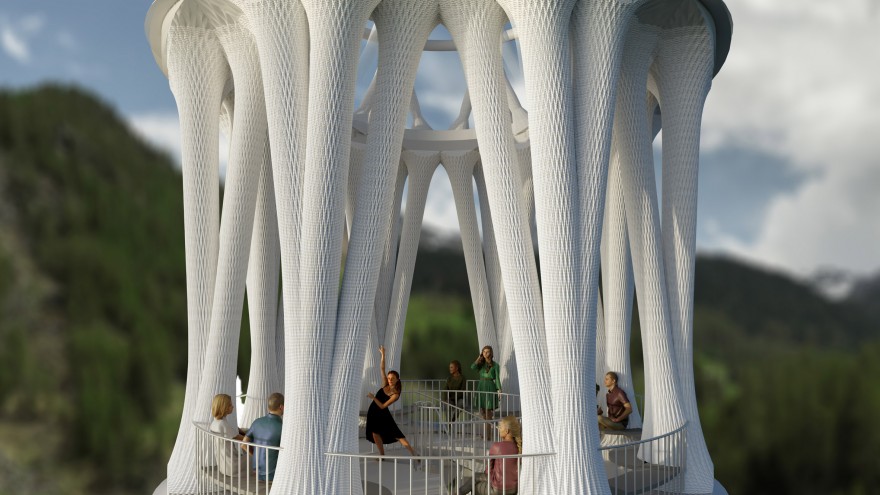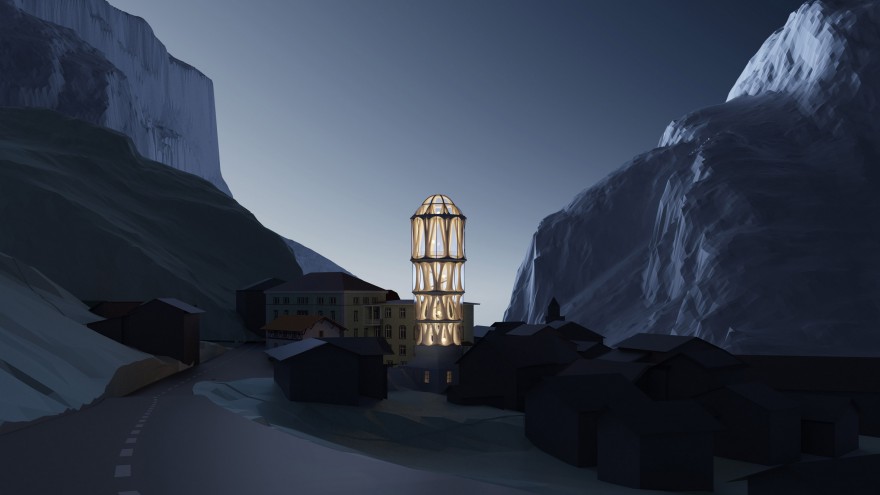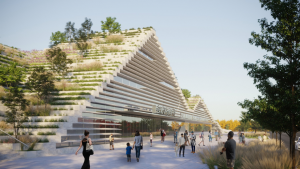Set to reach a height of 30 metres, the White Tower (or Tor Alva), in the remote village of Mulegns in Switzerland, was designed by architectural duo Benjamin Dillenburger and Michael Hansmeyer and is being constructed by the university ETH Zurich with 3D-printed concrete.
Designed for Fundaziun Origen, a local Swiss arts foundation, the White Tower is a bold architectural feat, with a shape reminiscent of the great craftsmanship of the Graubünden master builders of the Baroque era, who had a decisive influence on the region’s architecture. The tower will offer space for art installations and musical and theatrical performances.
The tower consists of 32 branching columns that enclose a sequence of abstract, atmospheric rooms. As described by the architects, visitors will ascend through this vertical enfilade to reach the vaulted concert venue on the top floor. This intimate hall can host an audience of 45 visitors, and will offer panoramic views across the Julier Valley.
‘With its spectacular architecture and ground-breaking technology, the tower demonstrates the possibilities that computational design and digital fabrication offer the fields of architecture and construction,’ writes ETH Zurich. ‘These include not only economic and ecological advantages, but they allow for elaborate non-standard architecture with a bold wealth of shapes.’
Tor Alva is made from concrete using a 3D printing process developed by the DBT group at ETH Zurich. In this innovative manufacturing process, a robot successively applies thin layers of soft concrete through a nozzle. The material is soft enough to bond and form homogeneous components, but hardens quickly enough to support the successive layers. In the White Tower, the printed concrete is used fully structurally for the first time and the necessary steel reinforcement is inserted in the robotic manufacturing process - a significant milestone in the development of 3D printing of concrete.
Using robotic concrete extrusion processes, concrete can only be applied where it is structurally needed, thereby significantly reducing material consumption. The process also requires no formwork which, in turn, offers new degrees of design freedom. With circular design in mind, the tower was designed to be easily assembled and dismantled; the elements are connected without adhesives, using removable screws.
ETH Zurich has commenced the 3D printing process and has so far created eight out of 32 structural columns.
READ MORE







